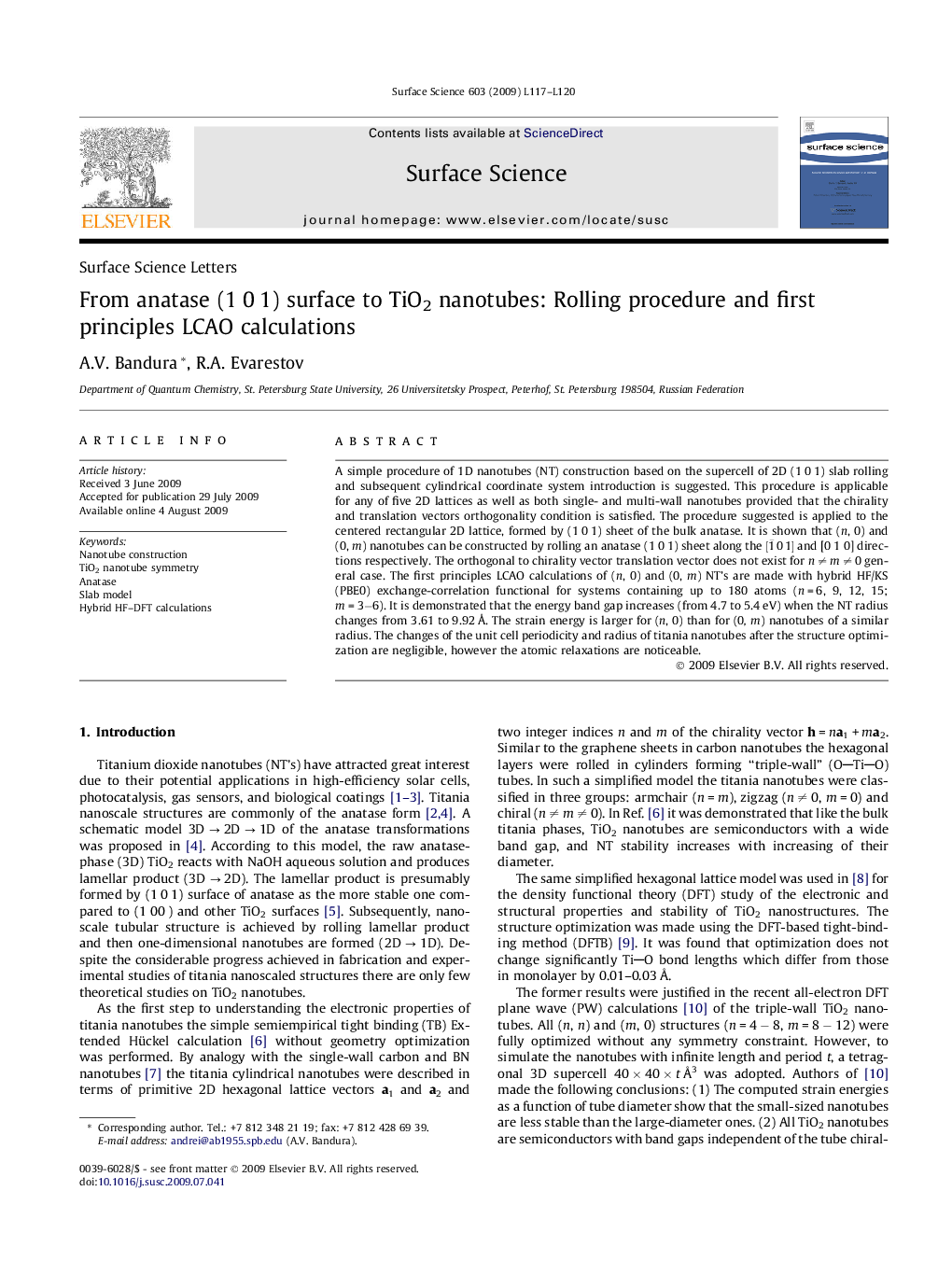| کد مقاله | کد نشریه | سال انتشار | مقاله انگلیسی | نسخه تمام متن |
|---|---|---|---|---|
| 5423879 | 1395805 | 2009 | 4 صفحه PDF | دانلود رایگان |

A simple procedure of 1D nanotubes (NT) construction based on the supercell of 2D (1 0 1) slab rolling and subsequent cylindrical coordinate system introduction is suggested. This procedure is applicable for any of five 2D lattices as well as both single- and multi-wall nanotubes provided that the chirality and translation vectors orthogonality condition is satisfied. The procedure suggested is applied to the centered rectangular 2D lattice, formed by (1 0 1) sheet of the bulk anatase. It is shown that (n, 0) and (0, m) nanotubes can be constructed by rolling an anatase (1 0 1) sheet along the [1¯01] and [0 1 0] directions respectively. The orthogonal to chirality vector translation vector does not exist for n â  m â  0 general case. The first principles LCAO calculations of (n, 0) and (0, m) NT's are made with hybrid HF/KS (PBE0) exchange-correlation functional for systems containing up to 180 atoms (n = 6, 9, 12, 15; m = 3â6). It is demonstrated that the energy band gap increases (from 4.7 to 5.4 eV) when the NT radius changes from 3.61 to 9.92 à . The strain energy is larger for (n, 0) than for (0, m) nanotubes of a similar radius. The changes of the unit cell periodicity and radius of titania nanotubes after the structure optimization are negligible, however the atomic relaxations are noticeable.
Journal: Surface Science - Volume 603, Issue 18, 15 September 2009, Pages L117-L120